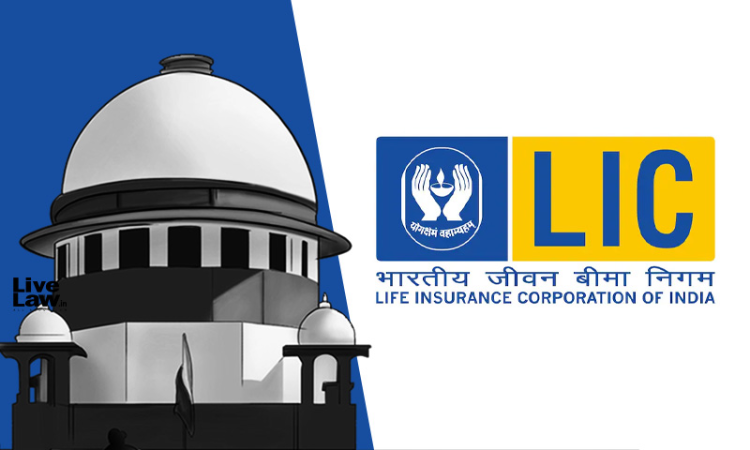Life insurance is more than a safety net—it’s a financial planning cornerstone that ensures your loved ones are cared for, no matter what the future holds. Did you know that nearly 60% of Americans do not have adequate life insurance coverage, leaving their families at risk of financial hardship in the event of an untimely death? In this comprehensive guide, we’ll explore the world of life insurance corporations—from their origins and evolution to their modern-day applications and benefits. Whether you’re new to life insurance or looking to deepen your understanding, this post will equip you with the knowledge you need to make informed decisions about securing your family’s future.
In this article, we cover:
- A Compelling Introduction: Why life insurance corporations matter and an interesting look at key statistics.
- Definition and Characteristics: A straightforward explanation of what a life insurance corporation is, including its core properties.
- Historical and Contextual Background: The origins, milestones, and evolution of life insurance corporations.
- In-Depth Exploration of Key Aspects: Detailed analysis of product lines, services, innovations, and customer benefits.
- Importance, Applications, and Benefits: How life insurance corporations impact everyday life, society, and business.
- Common Misconceptions and FAQs: Debunking myths and answering frequently asked questions.
- Modern Relevance and Trends: Recent developments, research, and debates shaping the future of life insurance corporations.
- Conclusion and Call-to-Action: A summary of key points and an invitation to explore further.
Let’s dive in and uncover the vital role that life insurance corporations play in securing financial futures and protecting what matters most.
Introduction: The Critical Role of Life Insurance Corporations
Imagine planning for a future where your family’s financial security isn’t left to chance. Life insurance corporations have been at the forefront of providing peace of mind to millions of people by ensuring that, should the unexpected occur, your loved ones will have the support they need. With a rapidly changing economic landscape and increasing uncertainties about the future, understanding the role of a life insurance corporation is more important than ever.
In this guide, we will explore:
- What is a life insurance corporation?
We provide a clear and concise definition along with the essential characteristics that define these entities. - Historical insights and evolution:
Discover how life insurance corporations emerged, evolved, and reached the scale they have today. - Key product lines and services:
An in-depth look at the various life insurance products offered, including term, whole, universal, and variable life insurance. - Benefits and applications:
Learn why life insurance is a critical part of financial planning for individuals, families, and businesses. - Debunking myths and answering FAQs:
Address common misconceptions about life insurance corporations and provide straightforward answers to frequently asked questions. - Modern trends and future directions:
Explore how technological advancements, regulatory changes, and evolving consumer needs are reshaping the life insurance industry.
Life insurance corporations are not only pillars of financial security but also innovators that have adapted over time to meet the changing needs of society. By understanding their operations, history, and modern applications, you can make better-informed decisions about protecting your future.
What Is a Life Insurance Corporation?
Definition and Essential Characteristics
A life insurance corporation is an entity that underwrites and sells life insurance policies to individuals and groups, providing financial protection to beneficiaries upon the insured’s death. These corporations are typically structured as publicly traded or privately held companies that pool risk from a large number of policyholders to offer guaranteed benefits while investing premiums to generate profit.
Key characteristics of a life insurance corporation include:
- Risk Pooling and Underwriting:
Life insurance corporations assess individual risks and combine them into a larger pool. This allows them to predict losses statistically and offer policies at rates that are financially sustainable. - Policy Offerings:
They provide a range of products such as term life insurance (coverage for a set period), whole life insurance (lifetime coverage with a savings component), universal life insurance (flexible premiums and benefits), and variable life insurance (investment-linked policies). - Investment Operations:
Premiums collected are invested in various financial instruments, which help generate the funds needed to pay claims and drive company growth. - Regulatory Oversight:
Life insurance corporations operate under strict state and federal regulations to ensure solvency, fairness, and consumer protection. - Financial Strength and Ratings:
Their ability to meet future obligations is measured by financial strength ratings provided by agencies such as AM Best, Moody’s, and Standard & Poor’s. - Customer-Centric Services:
Modern life insurance corporations emphasize digital innovation, offering online policy management, instant quotes, and comprehensive customer service platforms.
In essence, a life insurance corporation provides a critical service by offering products that secure your family’s financial future while operating as a profit-driven, heavily regulated business entity.
Historical and Contextual Background
The Origins of Life Insurance Corporations
The concept of life insurance has roots that date back centuries. Early forms of life insurance were developed in ancient Rome and later in medieval Europe, but the modern life insurance industry began to take shape in the 18th and 19th centuries.
Early Beginnings:
- 18th Century Innovations:
Life insurance in its earliest form can be traced back to the 1700s, when various societies in Europe and America started to offer protection against premature death. These early life insurance schemes were often mutual in nature, meaning that policyholders shared in the risks and benefits. - The Rise of Modern Corporations:
By the 19th century, with the advent of industrialization and improved record-keeping, life insurance became more structured. Companies began to form as corporations, pooling risks among a larger number of policyholders. This period saw the establishment of some of the first modern life insurance companies in the United States and Europe.
Milestones in the Evolution:
- Formation of Pioneering Companies:
Many of the largest life insurance corporations were founded in the 19th century, including companies like New York Life (1845) and Prudential (1875). These companies set industry standards in underwriting, claims processing, and policy administration. - 20th Century Expansion:
Throughout the 20th century, life insurance corporations expanded their product lines and geographic reach. Innovations such as the introduction of whole life and universal life policies provided customers with more flexible options and a cash value component. - Regulatory Developments:
The regulatory framework governing life insurance evolved significantly over time, ensuring that these corporations maintained adequate reserves and operated in a financially sound manner. Regulatory bodies in the United States, such as the National Association of Insurance Commissioners (NAIC), play a crucial role in overseeing these companies.
Notable Historical Anecdotes:
- Mutual to Stock Transition:
Many life insurance corporations originally operated as mutual companies, where policyholders were also the owners. Over time, some transitioned to stock companies to raise capital for expansion while still offering competitive products. - Innovations in Underwriting and Technology:
The digital revolution in the late 20th and early 21st centuries transformed the industry. Life insurance corporations began using advanced data analytics, artificial intelligence, and online platforms to streamline processes, personalize policies, and improve customer service.
The evolution of life insurance corporations mirrors the growth and modernization of the financial industry itself. Understanding this history provides context for how these institutions have developed the products and services that remain vital today.
In-Depth Exploration of Life Insurance Corporations
Key Product Lines and Services
Life insurance corporations offer a variety of products designed to meet different financial goals and life stages. Here are the main types of life insurance policies:
1. Term Life Insurance
- Definition:
Term life insurance provides coverage for a specific period, such as 10, 20, or 30 years. It pays a death benefit only if the insured dies during the policy term. - Characteristics:
Generally offers the highest death benefit for the lowest initial premium. Does not build cash value. - Ideal For:
Individuals seeking temporary financial protection for specific needs, such as covering a mortgage or funding children’s education. - Real-World Example:
A 35-year-old parent might purchase a 20-year term policy to ensure that, should they pass away unexpectedly, their family can cover living expenses and educational costs.
2. Whole Life Insurance
- Definition:
Whole life insurance provides lifetime coverage with a fixed premium. It includes a savings component that builds cash value over time. - Characteristics:
Offers guaranteed death benefits and a guaranteed cash value accumulation, which can be borrowed against. - Ideal For:
Individuals seeking permanent coverage and an investment vehicle that can serve as a financial resource in later years. - Case Study:
A whole life policy might be used by someone planning for long-term financial stability, such as leaving a legacy for heirs or funding retirement needs.
3. Universal Life Insurance
- Definition:
Universal life insurance is a flexible premium, adjustable benefit policy that combines permanent life insurance with a savings element that grows based on current interest rates. - Characteristics:
Policyholders can adjust their premiums and death benefits over time, providing flexibility to adapt to changing financial circumstances. - Ideal For:
Those who want the security of lifelong coverage with the flexibility to change policy details as their needs evolve. - Real-World Scenario:
A family experiencing fluctuating incomes might appreciate the flexibility of a universal life policy, allowing them to modify premiums during lean years while ensuring continued protection.
4. Variable Life Insurance
- Definition:
Variable life insurance policies allow policyholders to invest the cash value portion in various investment options such as stocks and bonds. The death benefit and cash value can vary depending on the performance of these investments. - Characteristics:
Offers potential for higher cash value growth, but with greater risk due to market fluctuations. - Ideal For:
Individuals with a higher risk tolerance who are looking for an investment component as part of their life insurance. - Example:
An investor might choose a variable life policy as part of a diversified financial strategy, aiming for higher returns over time while maintaining a death benefit.
5. Final Expense Life Insurance
- Definition:
Final expense life insurance, also known as burial insurance, is designed to cover funeral and burial expenses, as well as other end-of-life costs. - Characteristics:
Typically offers smaller death benefits, often ranging from $2,500 to $35,000, with simplified underwriting. - Ideal For:
Seniors who want to ensure that their final expenses are covered without burdening their families. - Use Case:
A senior individual might purchase a final expense policy to relieve their family from the financial stress of funeral costs.
Services Beyond Policies
In addition to selling life insurance policies, life insurance corporations provide a range of services to support their policyholders:
- Policy Administration:
Managing and updating policies, processing premium payments, and handling renewals. - Claims Processing:
Efficiently processing and paying claims to ensure that beneficiaries receive their benefits promptly. - Financial Planning Tools:
Offering calculators, online resources, and professional advice to help consumers understand their coverage needs. - Customer Support:
Providing personalized assistance through call centers, online chat, and mobile apps. - Digital Platforms:
Enabling customers to get quotes, purchase policies, and manage their accounts online with ease.
These products and services underscore the role of life insurance corporations in providing not just a financial product, but a comprehensive suite of tools that support long-term financial planning and security.
Importance, Applications, and Benefits of Life Insurance Corporations
Personal and Family Financial Security
Life insurance is an essential part of a sound financial plan, providing a safety net that protects your loved ones in the event of your passing. Here’s why life insurance corporations are so critical:
- Income Replacement:
Life insurance can replace lost income, ensuring that your family maintains their standard of living and can cover daily expenses, debts, and future goals such as college education. - Debt and Expense Coverage:
The death benefit can be used to pay off outstanding debts, mortgages, and other financial obligations, relieving your family of financial burdens during a difficult time. - Legacy Planning:
Life insurance can help create a financial legacy for your heirs, supporting their future endeavors and providing a foundation for long-term wealth building. - Tax Advantages:
In many cases, the death benefit from a life insurance policy is received income-tax-free by beneficiaries, offering significant financial benefits.
Societal and Economic Contributions
Life insurance corporations play a broader role in society and the economy:
- Capital Formation:
Premiums collected by life insurance corporations are invested in financial markets, contributing to economic growth and development. - Employment:
Life insurance companies are significant employers, providing jobs in underwriting, claims processing, sales, and administration. - Social Safety Net:
By offering policies that secure the financial future of millions of families, life insurance corporations help reduce poverty and provide stability during unforeseen events. - Innovation in Financial Services:
The evolution of life insurance products, from simple term policies to complex variable and universal life products, reflects ongoing innovation in the financial sector. These innovations help meet diverse consumer needs and drive the industry forward.
Business Applications and Benefits
For businesses and professionals, life insurance offers additional strategic benefits:
- Key Person Insurance:
Companies can insure key employees to protect against financial losses that may occur if a crucial team member passes away unexpectedly. - Employee Benefits:
Offering life insurance as part of an employee benefits package can enhance job satisfaction, attract top talent, and improve retention. - Succession Planning:
Life insurance can be used as a tool for business succession planning, providing funds to buy out a deceased owner’s stake and ensuring the continuity of the business. - Tax Planning:
Certain life insurance products offer tax advantages that can be leveraged as part of a broader corporate financial strategy.
Understanding these benefits highlights the multifaceted importance of life insurance corporations—not only for individual families but also for the broader economy and business landscape.
Common Misconceptions and FAQs About Life Insurance Corporations
Misconceptions
Myth: Life insurance is only for older people.
Reality:
Life insurance is beneficial at any age. Younger individuals often pay lower premiums and can lock in rates that may increase as they age.Myth: Term life insurance is the only type you need.
Reality:
While term life insurance is a cost-effective option for temporary needs, whole, universal, and variable life policies offer lifetime coverage and investment components that can be beneficial for long-term planning.Myth: Life insurance is too expensive.
Reality:
Premiums vary widely based on factors such as age, health, and coverage amount. With proper planning and comparison shopping, many individuals can find affordable options that fit their budget.Myth: Once you buy a policy, you can’t change it.
Reality:
Many life insurance policies, especially universal and variable types, offer flexibility in terms of premium payments and death benefits, allowing policyholders to adjust their coverage as their needs evolve.
Frequently Asked Questions (FAQs)
Q1: What is a life insurance corporation?
A: A life insurance corporation is a company that underwrites and sells life insurance policies, pooling risks from policyholders to provide financial benefits to beneficiaries upon the insured’s death.Q2: What types of life insurance are available?
A: The main types include term life insurance, whole life insurance, universal life insurance, variable life insurance, and final expense insurance. Each type offers different benefits and is suited to varying financial needs.Q3: How do I determine how much life insurance I need?
A: Consider your financial obligations, income replacement needs, outstanding debts, future expenses (like college or retirement), and the overall financial security you want to provide your loved ones.Q4: Can I convert my term policy to a permanent policy?
A: Many term life insurance policies include conversion options that allow you to switch to a permanent policy without additional medical underwriting, usually within a specified period.Q5: Are the death benefits from life insurance taxable?
A: Generally, death benefits are received tax-free by beneficiaries, although there are exceptions based on the policy structure and estate planning considerations.Q6: What happens if I miss a premium payment?
A: Most life insurance policies have a grace period. However, missing payments can affect your coverage and, in some cases, lead to policy lapse. Always review your policy terms for specific details.Q7: How does the cash value component work in whole life insurance?
A: Whole life policies build cash value over time, which can be borrowed against or used to pay premiums. The cash value grows at a guaranteed rate and can provide a source of funds in emergencies.
Modern Relevance and Current Trends in Life Insurance Corporations
Technological Advancements and Digital Transformation
Life insurance corporations are embracing technology to improve customer experience and operational efficiency:
- Online Platforms:
Many life insurance corporations now offer online quoting, policy management, and claims processing. This digital transformation makes it easier for consumers to access information and manage their coverage. - Mobile Applications:
Mobile apps enable customers to review policies, submit claims, and even receive personalized financial advice on the go. - Artificial Intelligence and Data Analytics:
Insurers are using AI to better assess risk, personalize pricing, and streamline underwriting processes. These tools also help in identifying fraud and improving overall customer service.
Changing Consumer Behavior
Modern consumers demand more transparency and flexibility from their life insurance providers:
- Customization:
There is a growing trend toward customizable policies that allow customers to choose coverage options that fit their specific needs and financial goals. - Integrated Financial Planning:
Life insurance is increasingly being viewed as part of a broader financial planning strategy, with products that offer both protection and investment opportunities. - Sustainability and Corporate Responsibility:
Consumers are drawn to companies that demonstrate social responsibility and sustainability. Life insurance corporations that invest in community initiatives and environmentally friendly practices are gaining favor.
Regulatory and Economic Influences
- Evolving Regulations:
Life insurance corporations operate under strict regulatory environments that continue to evolve. New regulations focus on transparency, consumer protection, and solvency requirements. - Economic Factors:
Factors such as interest rates, inflation, and market performance influence the pricing and profitability of life insurance products. Life insurance corporations must adapt to economic conditions to remain competitive. - Shift Toward Digital Sales:
The COVID-19 pandemic accelerated the shift toward digital channels, and life insurance companies are continuing to invest in online platforms to meet consumer demand for remote services.
These trends highlight the dynamic nature of life insurance corporations and their commitment to innovation and customer satisfaction in an ever-changing market.
The Broader Impact of Life Insurance Corporations
Personal Financial Planning and Security
Life insurance is a critical component of comprehensive financial planning:
- Financial Protection for Families:
Life insurance ensures that loved ones are provided for in the event of an untimely death, covering expenses such as mortgage payments, education, and daily living costs. - Wealth Accumulation and Legacy Building:
Certain types of life insurance policies, like whole and universal life, offer a cash value component that can be used as an investment tool or to build a legacy for future generations. - Tax Advantages:
The tax-free death benefit and potential tax-deferred growth of cash value make life insurance an attractive option for long-term financial planning.
Societal and Economic Contributions
Life insurance corporations contribute significantly to the broader economy:
- Capital Investment:
Premiums collected are invested in financial markets, helping to fund infrastructure, support businesses, and drive economic growth. - Job Creation:
The life insurance industry is a major employer, providing jobs in underwriting, claims processing, sales, and administration. - Social Stability:
By offering financial security, life insurance helps reduce poverty and supports economic stability for families during times of loss.
Business Applications and Benefits
For businesses and professionals, life insurance offers strategic advantages:
- Key Person Insurance:
Businesses use life insurance to cover the loss of key executives, ensuring continuity and mitigating financial risk. - Employee Benefits:
Offering life insurance as part of a benefits package can enhance employee retention, satisfaction, and recruitment. - Succession Planning:
Life insurance can be used to fund buy-sell agreements or provide liquidity during business transitions, ensuring smooth succession.
Understanding the comprehensive impact of life insurance corporations reveals their indispensable role in both personal and societal financial planning.
Conclusion: Secure Your Future with a Life Insurance Corporation
Life insurance corporations are more than just companies—they are vital institutions that provide financial security, promote economic stability, and support long-term wealth building. From their humble beginnings in the 18th and 19th centuries to the modern, digitally-driven powerhouses of today, life insurance corporations have continuously evolved to meet the changing needs of consumers and the market.
Key Takeaways:
- Definition and Role:
A life insurance corporation underwrites and sells policies that provide financial protection to beneficiaries upon the insured’s death. It pools risk, invests premiums, and plays a critical role in financial planning. - Historical Evolution:
From early mutual schemes to modern public corporations, the evolution of life insurance has been marked by innovation, regulatory changes, and expanding product offerings. - Product Diversity:
Life insurance products range from term and whole life to universal, variable, and final expense insurance, each designed to meet different financial goals. - Technological Advancements:
Digital transformation, telematics, and AI have revolutionized the way life insurance is underwritten, sold, and managed. - Societal Impact:
Life insurance corporations contribute to economic growth, job creation, and social stability, making them integral to the financial well-being of individuals and communities. - Modern Trends:
Customization, digital sales, regulatory changes, and evolving consumer expectations are shaping the future of life insurance, ensuring it remains a dynamic and essential industry. - Consumer Benefits:
Whether it’s protecting your family’s financial future, building wealth through cash value, or securing a legacy, understanding life insurance corporations empowers you to make informed decisions.
Call to Action:
Take control of your financial future by exploring the various life insurance options available. Visit reputable sources such as Investopedia, The National Association of Insurance Commissioners (NAIC), or directly at lifeinsurancecorporation.com (example link) to learn more about policies, rates, and benefits. Share this comprehensive guide with friends and family, and leave your comments below—what questions do you have about life insurance? Your journey to financial security starts with understanding the power of a life insurance corporation.
Additional Resources and References
For further insights into life insurance corporations and to deepen your understanding, consider exploring these reputable resources:
- Investopedia: Life Insurance
- Wikipedia: Life Insurance
- National Association of Insurance Commissioners (NAIC)
- Forbes Advisor: Best Life Insurance Companies
- History of Life Insurance – Encyclopedia Britannica
These links provide additional data, historical context, and expert analysis to help you make well-informed decisions about life insurance.





